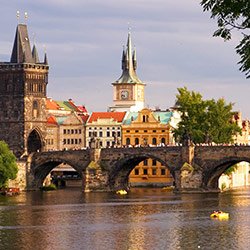Tips for Learning Spanish While Studying Abroad in Barcelona, Spain
Learning Spanish in Barcelona
Learning Spanish in Barcelona is a fascinating, sometimes frustrating, but ultimately rewarding experience. Unlike other Spanish cities, Barcelona is bilingual—Spanish (castellano) and Catalan (català) are both widely spoken, and locals often switch between the two effortlessly. While this might seem intimidating at first, it actually provides a unique opportunity to engage with multiple languages at once.
Before arriving, I expected to immerse myself in Spanish quickly. However, I soon realized that many locals spoke Catalan among themselves, making it a bit more challenging to hear and practice Spanish in some settings. That said, nearly everyone who speaks Catalan also understands Spanish, so it was never a barrier—just a slight twist in the learning process.
Adding to the challenge, Barcelona is an international city where many people also speak English. This means that when locals hear you struggle in Spanish, they might switch to English to be helpful. While convenient, it can make immersion more difficult. The key is to keep trying and politely insist on speaking Spanish whenever possible– “porque quiero practicar!” (“because I want to practice!”)
Embracing Everyday Opportunities to Practice Spanish
1. Attending Local Events Like Carnival
One of the best ways to hear and practice natural Spanish is by attending local events. During Carnival in Sitges, I found myself surrounded by fast-paced conversations filled with slang and expressions I hadn’t learned in class. Listening to native speakers interact in a fun, lively setting helped me pick up nuances of the language while enjoying a cultural tradition.
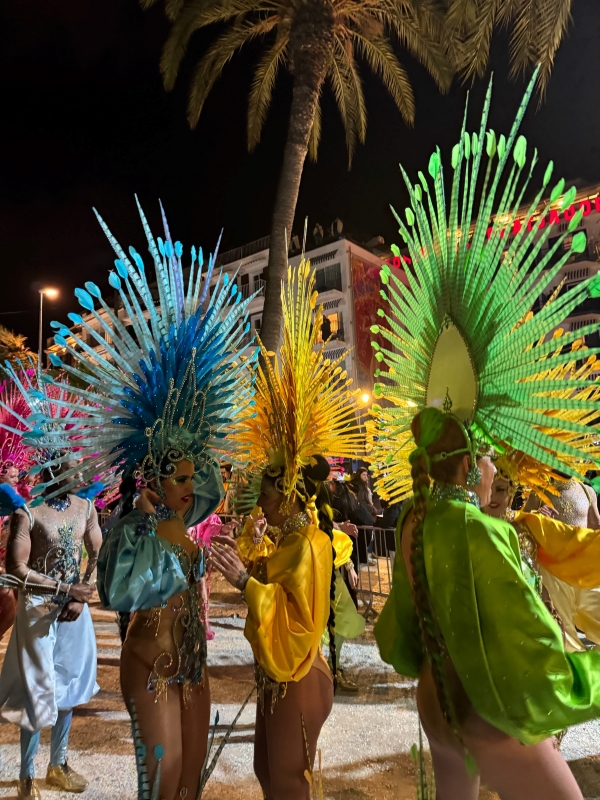
A festive night in Sitges!
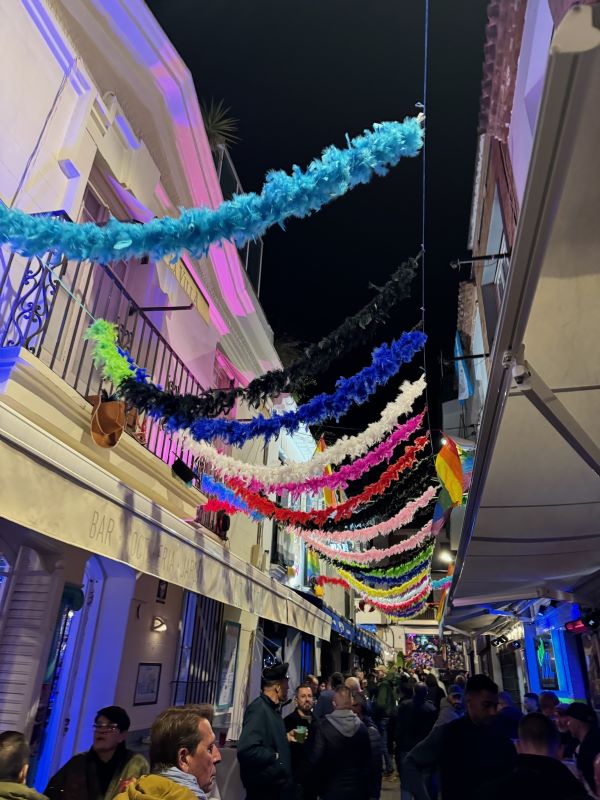
2. Talking to People in Cafés and Markets
Ordering a coffee in Spanish might seem like a small thing, but these everyday interactions are crucial for improving language skills. In my first few weeks, I made an effort to chat with baristas, ask questions at the market, and engage in small talk with locals. The more I practiced, the more natural it became. Plus, I started picking up common phrases unique to Spain, like vale (okay) and qué fuerte! (that’s crazy!).
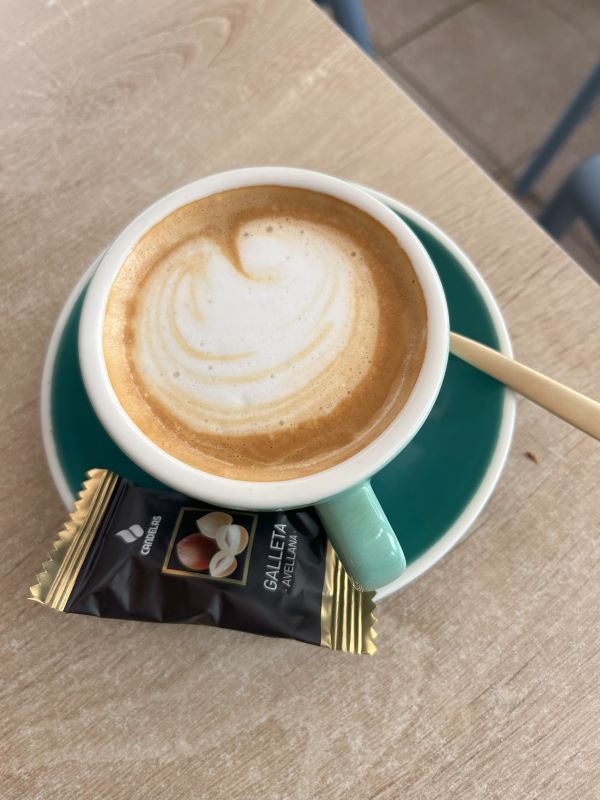
Coffee (ordered in Spanish) from my favorite local café
The Power of a Few Catalan Phrases
Though I didn’t need to learn Catalan to get by, I quickly realized that making a small effort to use Catalan phrases was deeply appreciated by locals. Simple words like bon dia (good morning), gràcies (thank you), and adéu (goodbye) went a long way in showing respect for the local culture. Living in Barcelona, learning the history and culture of the Catalan identity has also been an integral and unique part of my experience and is something that has helped me gain a fuller understanding of the city.
Language Exchanges: One of the Best Ways to Learn
One of my favorite language-learning experiences was attending a language exchange with my Spanish class. We went to the nearby university to meet students who were studying English, allowing both sides to practice in a relaxed setting. These exchanges were a great way to improve my conversational skills, ask about slang, and make new friends. Afterward, we exchanged contacts to keep practicing together outside of class.
Café Olé is another event to take advantage of when studying with CEA CAPA. It is a language exchange that takes place in a cute café in the city center. A CEA CAPA representative will be there as well to help and participate, and anyone is welcome, no matter your Spanish level!
Extra Tips for Learning Spanish in Barcelona
Politely Insist on Speaking Spanish: When people switch to English, keep responding in Spanish to show your commitment to learning.
Watch Spanish TV and Listen to Podcasts: Local news, Spanish Netflix shows, and Catalan radio can help train your ear.
Take a Catalan Workshop: Even a basic understanding of Catalan will help you feel more connected to the city.
Set a Daily Goal: Try having at least one meaningful conversation in Spanish each day.
CEA CAPA Active Learning Activities: Some of the Active Learning activities that CEA CAPA offers have the option to be taken in Spanish. This is just one more opportunity to immerse yourself in the language and culture of Barcelona.
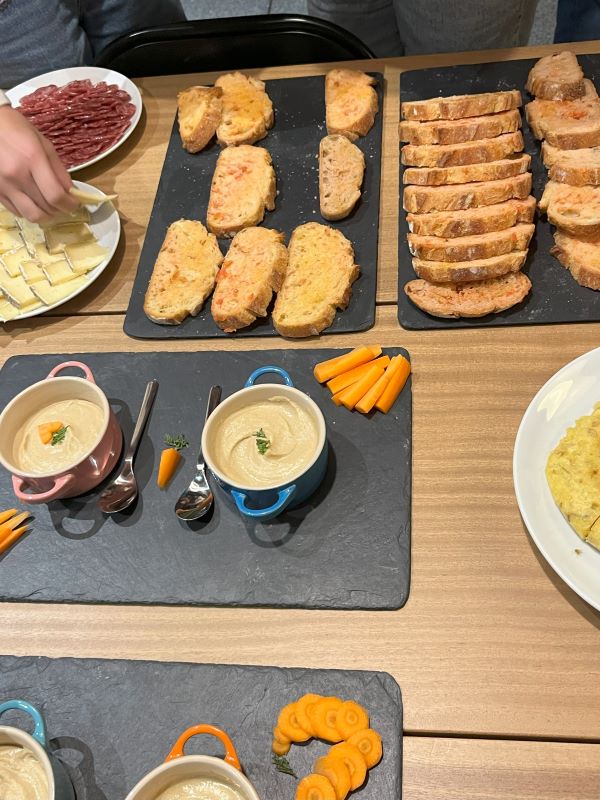
The finished products from our Tapas Cooking class conducted in Spanish
Conclusion: Keep Going—It’s Worth It!
Learning Spanish in Barcelona is challenging but incredibly rewarding. While the mix of Catalan, Spanish, and English can feel overwhelming at first, persistence pays off. Engaging with locals, attending cultural events, and making small efforts with Catalan will make your experience more immersive and meaningful. Don’t get discouraged, just keep going—it’s more than possible if you put in the effort!
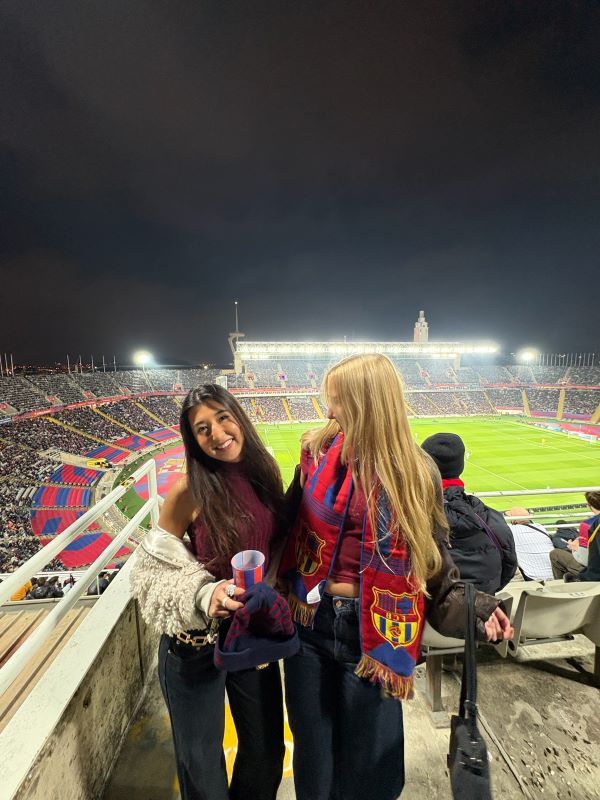
More cultural and language immersion at an FC Barcelona futbol game!


